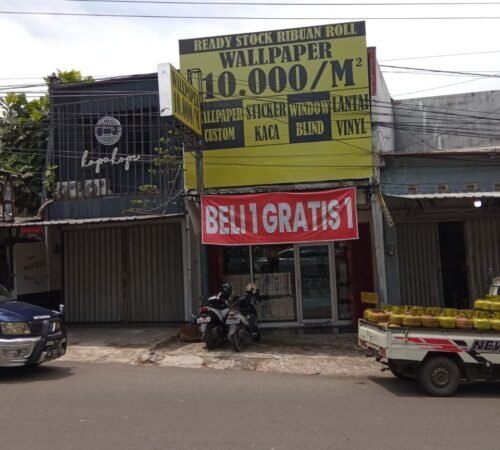The value of the regular ruble is identical to the value of the digital ruble, and the Bank of Russia has around 12 digital banks already working. Alongside the peso, the United States dollar is also legally used for all monetary transactions. The table below sourced from VisualCapitalist ninjatrader broker review highlights the 10 oldest currencies which were created years ago and are still traded today. Money and currency are sometimes used interchangeably but Investopedia clearly and distinctly defines money and currency as having different meanings. Remitly is on a mission to make international money transfers faster, easier, more transparent, and more affordable.
Frequently used banknotes are ¥1,000, 5,000, and 10,000, all carrying historically-important people of Japan on its face. The Macao pataca is the currency of Macao (MSAR), backed by the Hong Kong dollar. Macanese pataca replaced the Spanish American silver dollar in 1894 in former Portuguese Macau, a Portuguese colony from 1557 to 1999, when the Republic of China took over the sovereignty. President Trump claims that the tariff policy implemented by his administration has prevented a global economic depression. Though Serbia has faced numerous challenges, from invasions to economic turmoil, the so-called “din” has demonstrated resilience and continues to be a relevant currency in the country.
Three African countries owe Nigeria $20 million in electricity debts
The newest currency in the world is the South Sudanese pound, which was made official in June 2011. Other relatively new currencies include the Euro, which was first issued in 1999 and widespread issued in 2002. Innovation and adaptation is a contributing factor in ensuring a currency’s long-term sustainability. Take for example China with its eRMB and India with its digital rupee released in 2022, according to Mondaq.com. In Southeast Asia, Thailand’s currency—Thai Baht—is known to be one of the oldest currencies in circulation, linked back to the 13th century. Dating back to the 13th and 14th centuries, the Russian Ruble is regarded as the second oldest currency in the world.
Because of their colonial past, the notes are printed in Portuguese and Chinese in MOP$10, 20, 50, 100, 500, and 1,000 denominations. Today, the forex market, or global market for foreign exchange of national currencies, is one of the largest markets in the world, with over $6.6 trillion in trades every day. In this article, we will explore some of the oldest currencies in the world that are still in use today, citing Visual Capitalist, Investopedia, and other sources. From the British Pound to the Japanese Yen, let’s learn more about these ancient banknotes.
The name “ruble” comes from the Russian verb “rubit,” meaning “to chop,” originally referring to chopped-off pieces of silver ingots used as currency. This practical origin reflects Russia’s pragmatic approach to monetary systems. Early Chinese currencies included cowrie shells, bronze implements, and round coins with square holes in the center. The standardization of currency under Emperor Qin Shi Huang in 221 BC established principles that would influence Chinese monetary policy for millennia.
U.S Dollar
Simply put, the term “first issued” refers to the exact date when a currency—whether it is a banknote or coin—was originally introduced as a payment medium by a country’s monetary authority. Surprisingly, the British sterling is the world’s oldest currency still used in the world, in the United Kingdom to be precise, dating back to 1222 years ago. The central unit of sterling is a pound, hence the nickname, and has the £ symbol, which derives from the Latin word meaning libra. The Serbian dinar replaced the Yugoslav dinar in 2003 when the country became the State Union of Serbia and Montenegro.
The British Pound Sterling: Over 1,200 Years Strong
These include digital money like Ethereum (ETH), Ripple (XRP), Tether (USDT), and Litecoin (LTC). The British pound sterling is generally recognized as the oldest continuously used currency, with origins dating back to around 775 AD. Long-surviving currencies typically benefit from stable governments, sound monetary policies, economic adaptability, and strong institutional support. Central banks play a crucial role in managing these currencies through various economic challenges. Throughout its history, the ruble has been redenominated multiple times, survived hyperinflation, and adapted to dramatically different economic systems.
Until then, there were 12 pennies to the shilling and 20 shillings to the pound. The £1 coin was introduced in 1983 to replace the £1 note because coins usually last much longer. At the time, Margaret Thatcher, the prime minister, believed coins were ‘not very popular’ and the pound note should be retained. £1 notes are still issued in Scotland, Jersey, Guernsey and the Isle of Man, along with the £1 coins, which are more commonly used.
It was officially recognized as the nation’s currency in 1704, when Tsar Peter the Great created the first standardized silver ruble. At the top of the list, recognized as the oldest currency still in use and is one of the most exchanged on the forex market is the British Pound Sterling or GBP. Firstly issued over 1,200 years ago around 775 AD in the Saxon kingdoms, its name is derived from the Latin word “libra” which refers to the basis of the currency’s value—silver. There was a time when the ruble wasn’t in circulation, but today is one of the main currencies in oil and natural gas trades.
- This combination of governmental authority, monetary policy independence, and sturdy financial infrastructure secures the Pound’s durability.
- Currency is more than just a medium of exchange, but rather a reflection of one country’s development and history.
- Despite numerous dynastic changes and political upheavals, the underlying Chinese approach to currency has maintained consistent characteristics across centuries.
- British sterling is the fourth most-traded currency in the world, right after the United States dollar, the Japanese yen, and the euro.
The world’s top 10 oldest currencies that are still in use
- Haitian gourde had a few revaluations, the first in 1870 with the introduction of new G10 and G25 denominations.
- Today, the Indian rupee symbolizes a thriving economy and a continuity of ancient trade practices.
- This contains a group of currency pairs which share the same base currency, the pound sterling, giving you exposure to multiple currencies vs the pound in one single position.
- These enduring currencies tell fascinating stories of economic resilience, cultural continuity, and adaptive evolution.
That was until the Swiss Franc was established as a monetary unit by the federal government. The bills were printed in different denominations since 1745, and today they carry Queen Elizabeth II on the obverse side. As the name suggests, the Russian ruble is the currency of the Russian Federation, the second oldest currency worldwide. It was introduced in the 13th century, but it has been through various revaluations until the Soviet Union dissolved in 1992, when the Soviet ruble became the Russian ruble.
Understanding how these ancient currencies thrived provides insights for both modern monetary policy and personal financial decisions. Their endurance reminds us that sound financial principles and careful management create lasting value that transcends political boundaries and economic cycles. Japan’s currency survived the country’s transition from feudalism to modernization, devastating earthquakes, World War II, and rapid economic growth during the post-war period. The yen’s stability comes from Japan’s consistent monetary policies and the country’s position as a major global economy. The British pound sterling (GBP) is arguably the oldest currency still in widespread use. Tracing its origins back to the Anglo-Saxon period, the pound was initially a unit of weight for silver.
African countries with the weakest currencies compared to the US dollar
Japan’s currency history spans over 1,300 years, beginning with the adoption of Chinese-style coins during the 8th century. The modern yen was introduced in 1871 during the Meiji Restoration, but it represents a continuation of Japan’s long monetary tradition. The yuan’s resilience stems from China’s continuous political structure and the government’s active role in monetary policy. Despite numerous dynastic changes and political upheavals, the underlying Chinese approach to currency has maintained consistent characteristics across centuries. The name “sterling” likely derives from the Old English word “steorling,” meaning “little star,” referring to the small silver coins that featured star-like designs.
Despite its independence in 1833, the Falkland Islands have maintained the pound as their official currency, which is pegged to the pound sterling at the same rate. British sterling is the fourth most-traded currency in the world, right after the United States dollar, the Japanese yen, and the euro. The first British pound sterling notes were issued in 1694, handwritten as paper money. From the British pound sterling to the Chinese yuan some of the world’s oldest currencies continue to facilitate trade and commerce centuries after their creation. Understanding their origins and survival strategies offers valuable insights into economic stability and the factors that allow monetary systems to thrive across generations. Although officially introduced as a national currency in 1850, the Swiss franc (CHF) draws upon centuries-old banking and monetary practices from Swiss cities such as Zurich and Geneva.
The pound sterling was then officially divided into 100 pence on February 15, 1971. While the UK once considered to link its value to the German Deutsche Mark in 1990, they chose to stick to their own currency, even after the euro currency appeared in 2002. The third most-traded currency in the foreign exchange is the Japanese yen, the official national currency of Japan. Money has remained a huge part of human evolution irrespective of its form as objects, coins or banknotes in the past 5000 years. The oldest currency that is still in use today is the British pound, also known as the pound sterling. While the Portuguese escudo was replaced by the euro in 2002, its history traces back to medieval times, creating a longstanding monetary tradition.
Russian Ruble
But Montenegro adopted the euro instead and never used the dinar as their official currency. National Bank of Serbia prints denominations of 10, 20, 50, 100, 200, 500-, 1,000-, 2,000-, and 5,000-dinar banknotes, a rare variety for worldwide currencies. The Republic of Haiti is among the poorest countries in the Americas, as the country struggles with inflation and exchange rates of the gourde. But despite this, Haiti is a gorgeous mountainous country in the Caribbean, and it was the first black-led republic after getting independence back in 1804. The pound is the official national currency of Great Britain and the British Overseas Territory in the South Atlantic Ocean, the Falkland Islands. Banknotes are issued by two commercial banks, the Banco Nacional Ultramarino and the Bank of China.
As explained in Ebanx Insights, the Chinese Yuan was widely used in Southeast Asia due to Spanish colonial influence. The founding of the People’s Bank of China in 1949 marked the beginning of modern yuan or renminbi (RMB) and a series of coins and notes were minted throughout the 20th century. The Japanese currency known as “yen” originated back in 1871, after the modernization of Japan which is known as Meiji Restoration.



